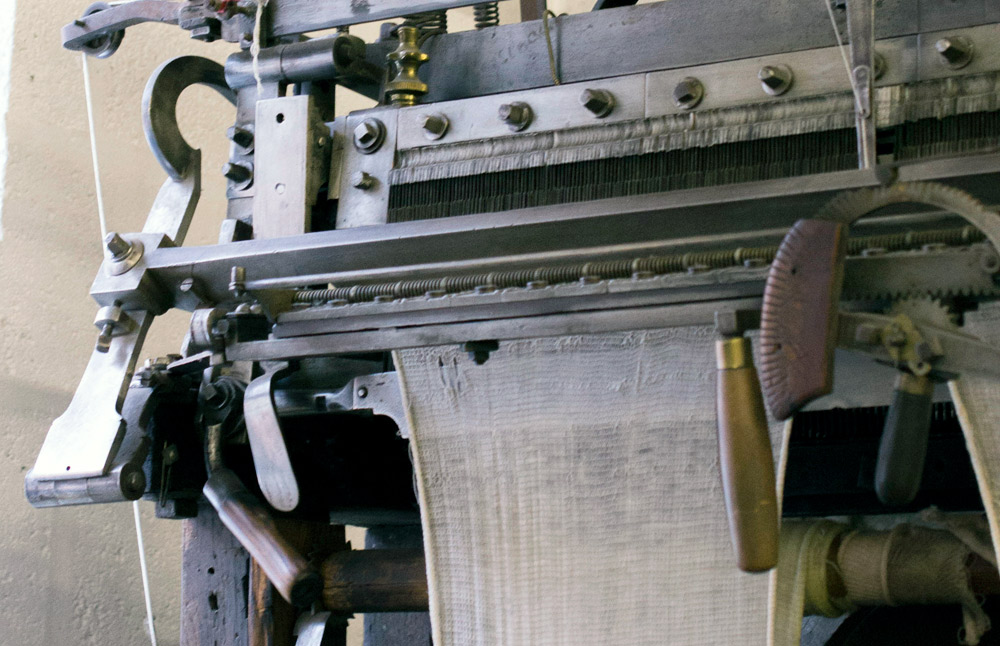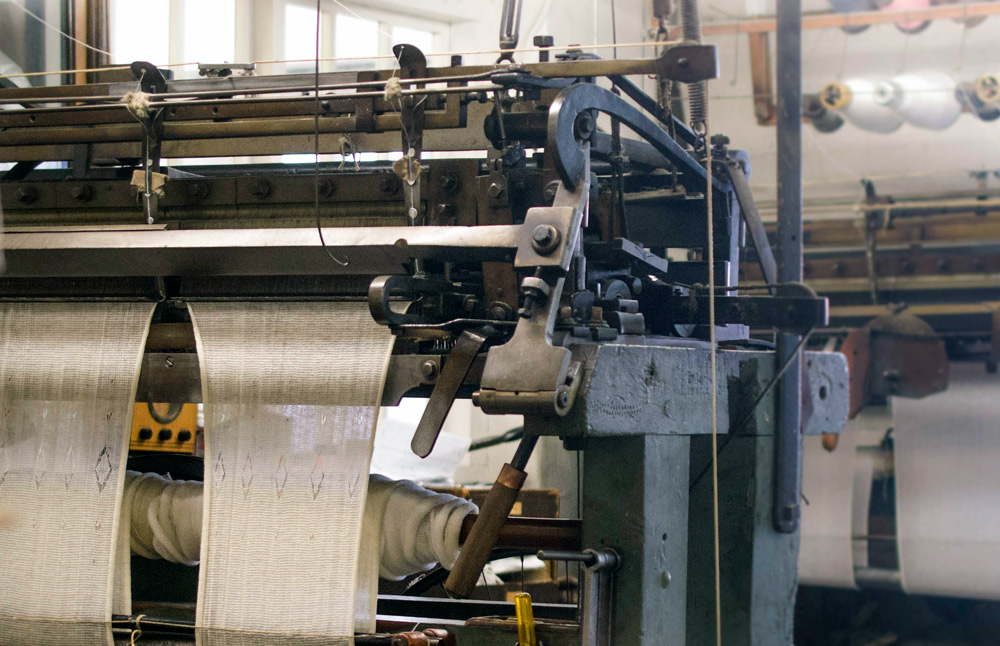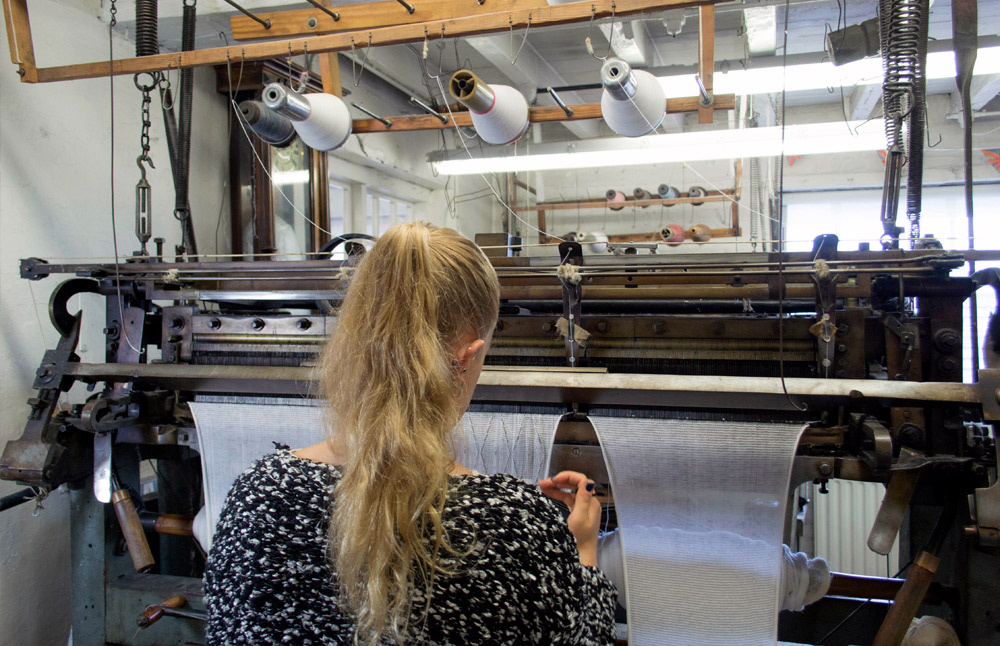A History of Handframe Knitting
The Hand Frame Knitting machine was invented in by Rev. William Lee of Nottingham in 1589, during the reign of Queen Elizabeth I. Lace-knitting was a cottage industry trade that contrasted the typical working conditions of manufacturing in the Industrial Revolution. It was an enormously popular endeavour, with over 16,382 frames recorded to be across Nottinghamshire in 1844. Handframe Knitting was multi-generational and was intended for use in the home. Whilst wives and their children wound bobbins and seamed stockings, men would work the frame. It was rare for the family line of business to break as the handframes were passed down from father to son. With the advance of powered machinery producing hosiery cheaply, many Handframe knitters adapted their machine to make other forms of knitting, for example, Shetland style lacy shawls. This was very much the situation to be found amongst families still using the frames to knit in Chilwell, around the start of the 20th century.

In 1912 George Henry Hurt started the knitting business, G.H.Hurt & Son, in an old seed warehouse dated 1781 in Chilwell, Nottingham and is still the present location for the working office and factory to date. We are an exception to the history of hand frame knitting machines, with 13 still remaining in our factory and 2 in brilliant working order. It is unique for a company to hold onto antique machinery, especially when the priority lies with modern technological advances. We are proud to still have them in use here at our factory and occasionally placement students from Nottingham Trent University, learn the skill and create a product on the handframe.

Our Oldest Handframe
One of the oldest handframes in our possession is thought to have dated back to the 1700s. It’s difficult to know the exact provenance of the handframes as they have been reconditioned for use over the years in the factory. Nevertheless, many of the knitting machines that aren’t in use have been left untouched, keeping alive the personality of the worker that once knitted on it. As a company that is full of rich heritage, historical stories and generations of families within the business, we feel it’s important to commemorate those who committed themselves to work at G.H.Hurt & Son and working consistently on these beautiful forms of machinery.

The Oxley Family
Frank Oxley worked this frame until c1948. It is thought he knitted on this machine before 1912, in Oxley’s Frame Shop in Park Road, Chilwell, from whence it originally came. Frank, was a father to 2 daughters and 4 sons, two of whom, Ernest and Harold Oxley, worked on the handframes in the Shawl Factory. In 1955 Henry Hurt knitted on it for his weekly wage, mainly producing the firm’s style B52 – 54” x 54” shawls, with hand-stitched borders in the Shetland Style.

Handframe Knitting in 2017
In 2017, Jacaranda, a placement student studying a BA in Fashion Knitwear Design and Knitted Textiles at Nottingham Trent University, used this particular handframe to create her own lacy scarf. It takes a huge amount of time and commitment to produce a scarf on the handframe but having the patience is always gratifying once the final product is complete.
We understand as a company that the traditional way of knitting isn’t as beneficial and manageable as modern technology and machinery. However, without the invention of the handframes setting the foundations for the company back in 1912, we wouldn’t have been able to continue developing and advancing as a business into the 21st Century.